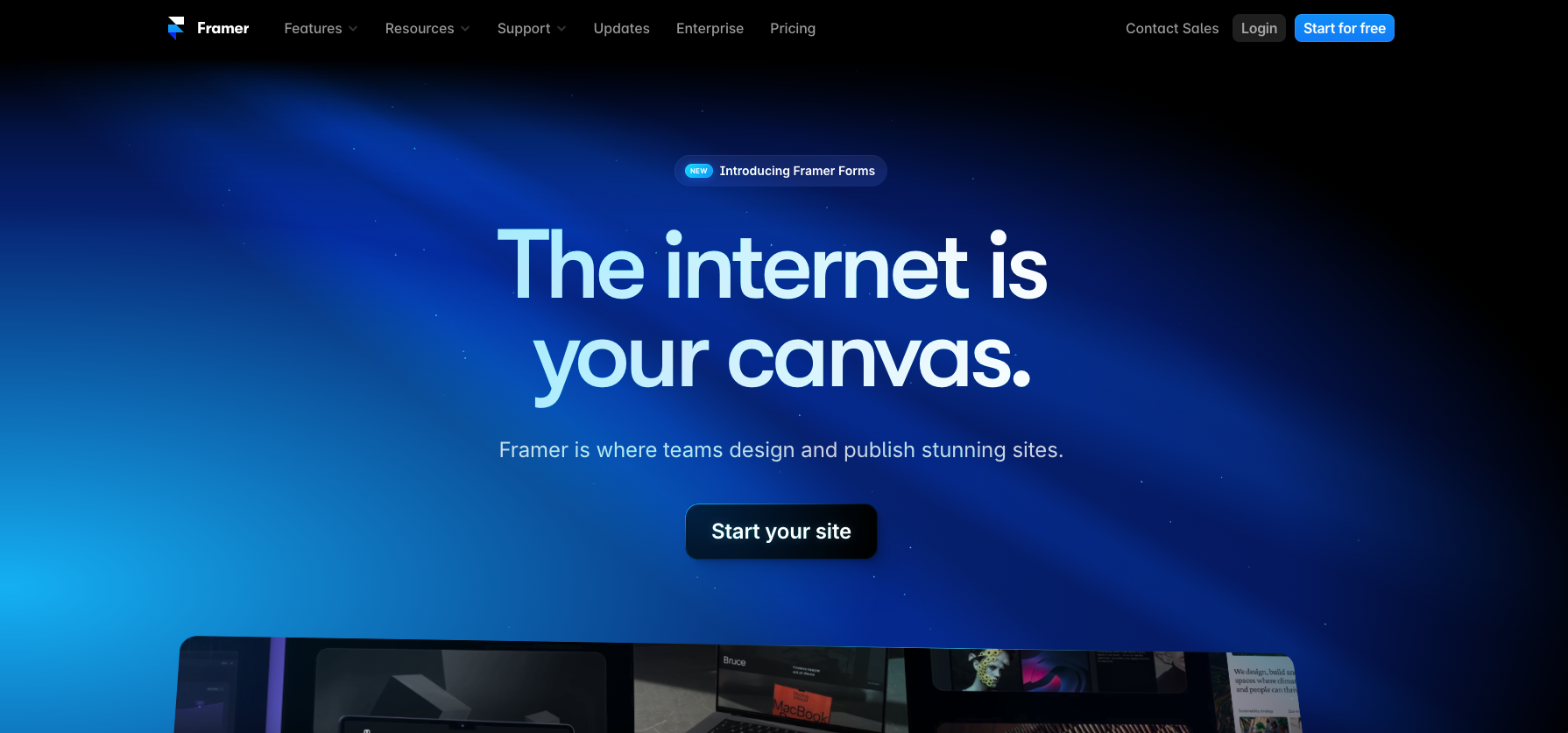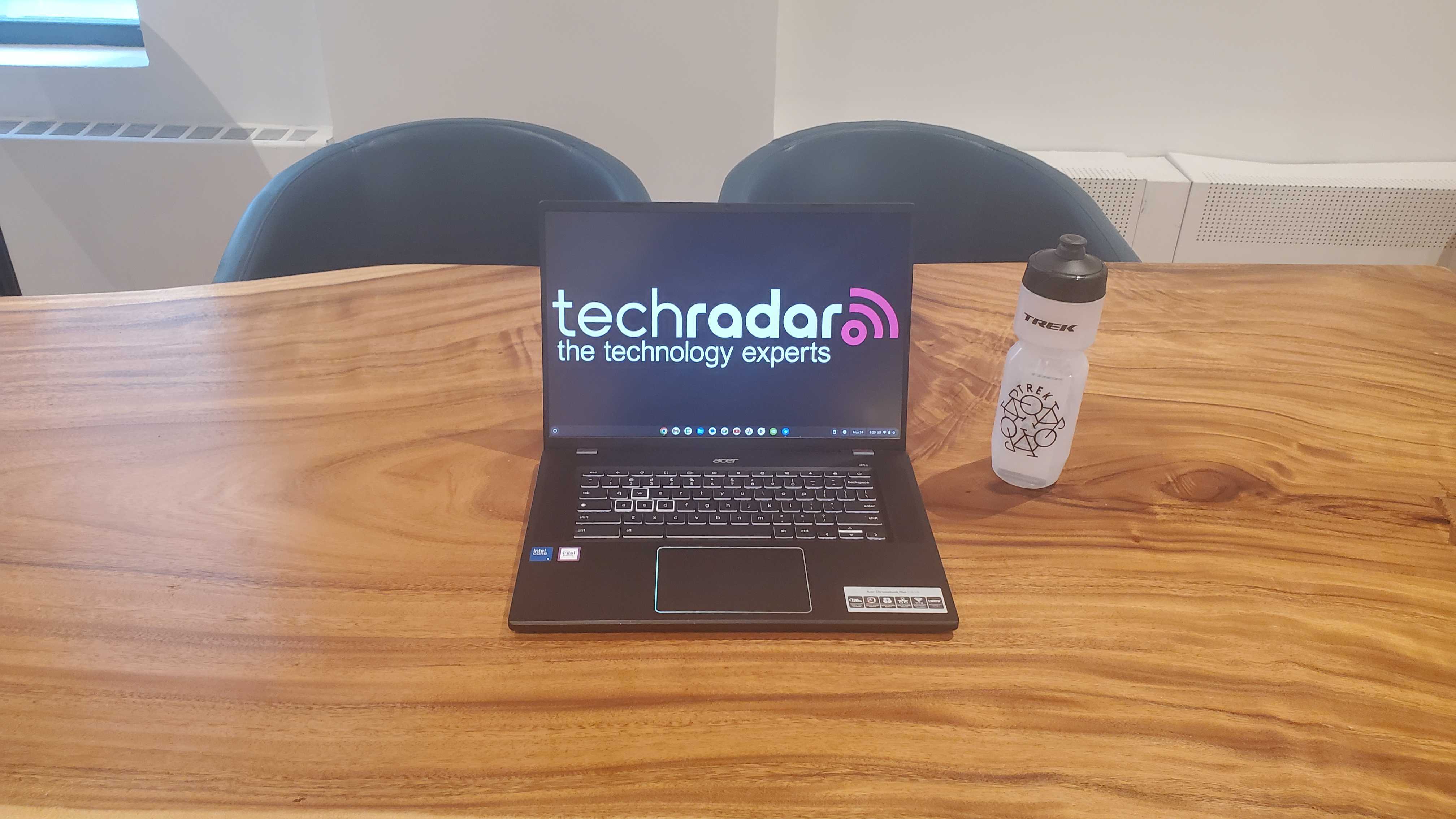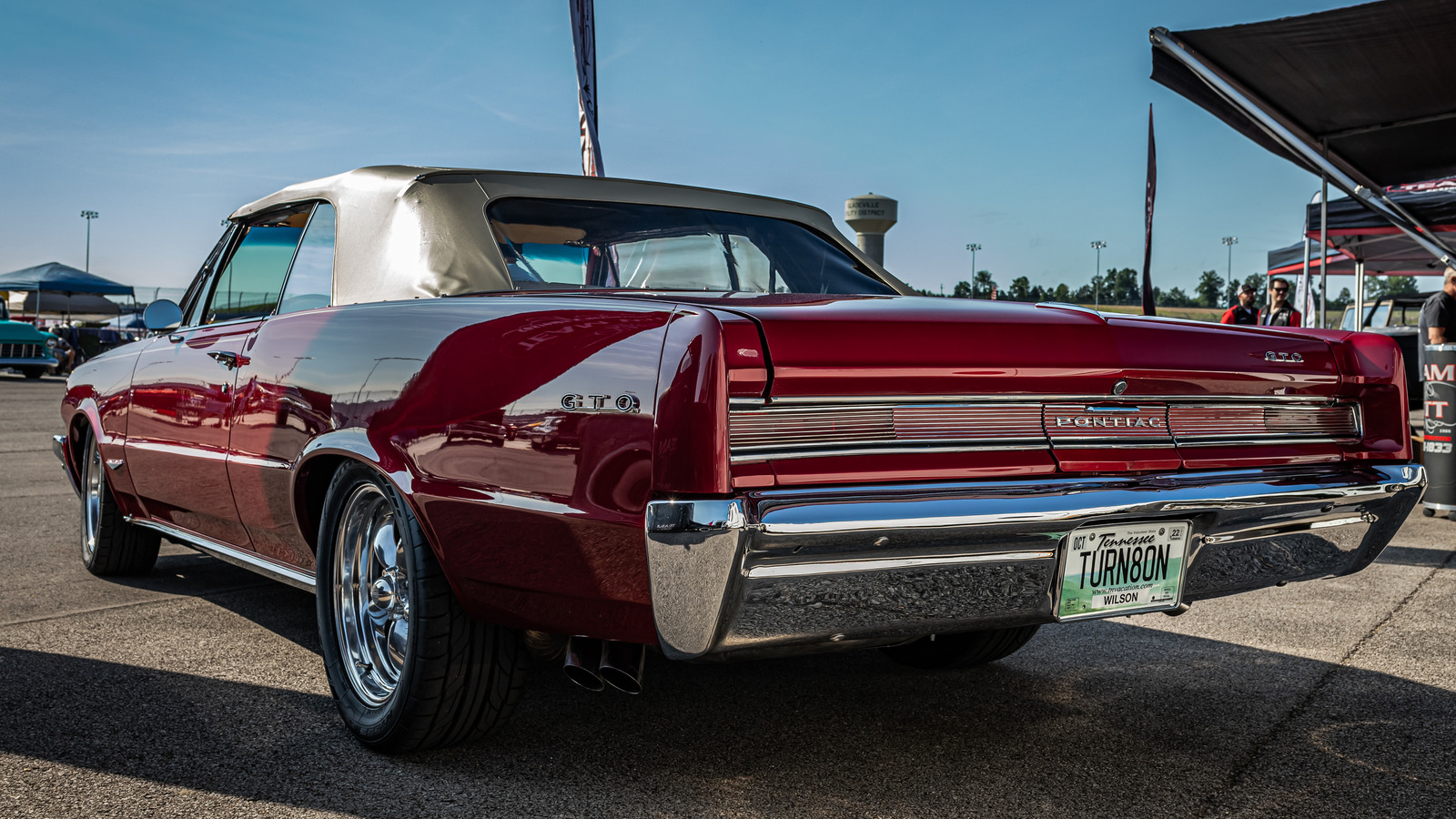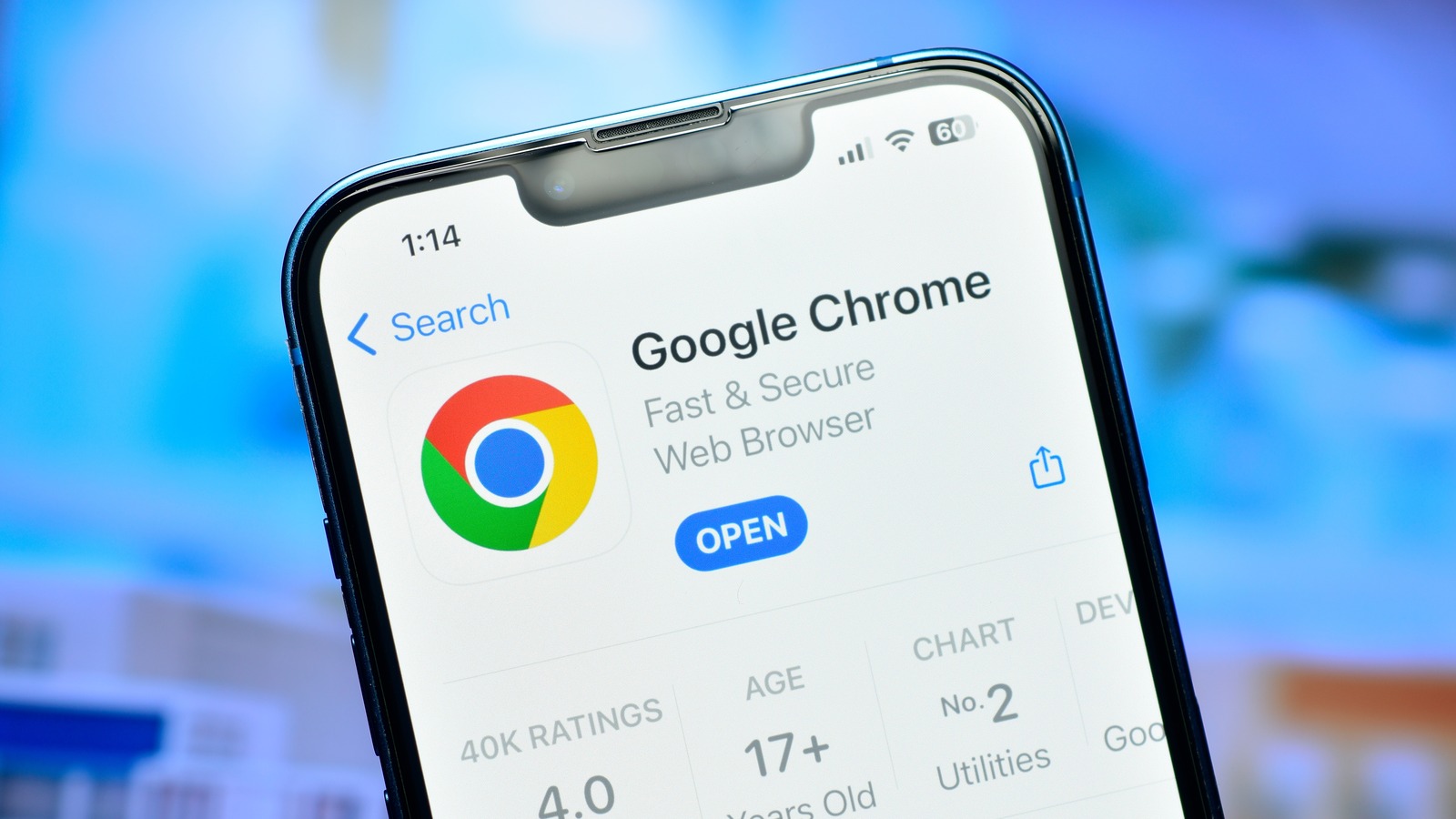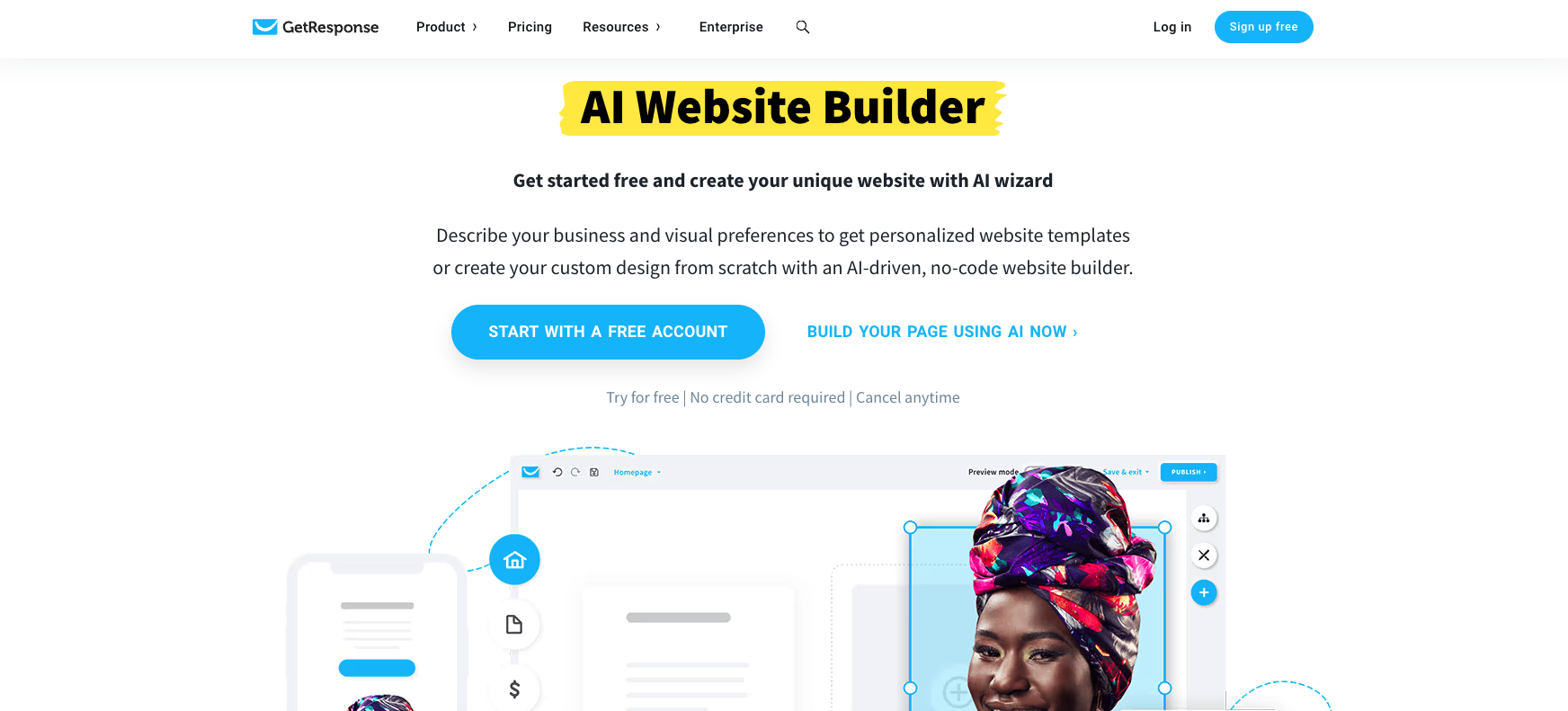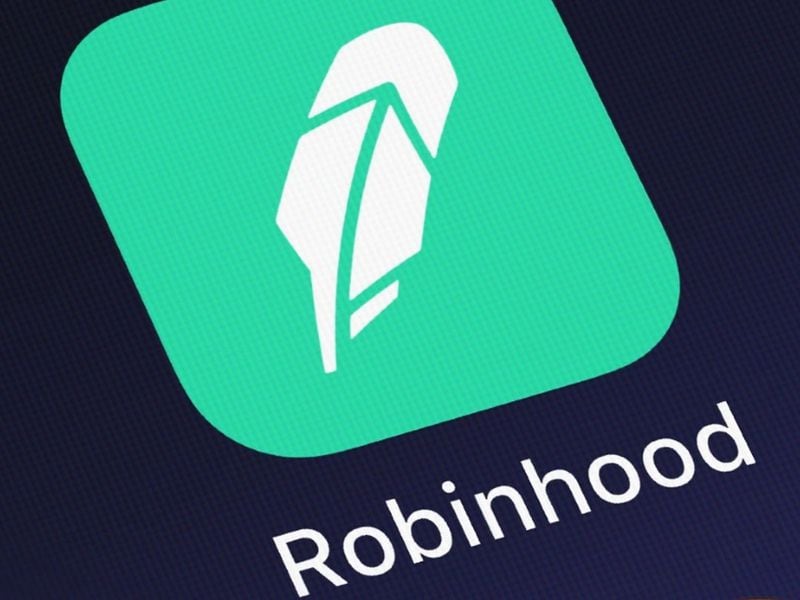Microsoft Surface Pro 11 review: the best Surface ever — and it'll only get better
The Microsoft Surface Pro 11 had a high bar to clear, and it has absolutely made me a believer in Microsoft's vision for Windows-on-Arm.

Microsoft Surface Pro 11: Three-minute review
OK, so it's time for me to eat some crow.
Last year around this time, I scoffed at the idea of Microsoft making its own Arm chip to power its Surface lineup, and I was, frankly, pretty savage in my opinion of Windows-on-Arm based on the limited number of examples that'd actually made it to market (all of which were pretty much garbage).
If I had less integrity, I could say that 'what I was really talking about was Microsoft designing its own chips and having them fabbed by TSMC the way Apple does with its M-series chips, not partnering with Qualcomm for the new Microsoft Surface Pro 11!'
But that wouldn't be honest. The new Qualcomm Snapdragon X Elite SoC in the Surface Pro 11 was co-developed by Microsoft specifically to run a new generation of Copilot+ AI PCs, with its Surface Pro and Surface Laptop leading the way. Functionally, yes, it's different than what Apple is doing, but substantively, it's not, and what Microsoft is doing is better than what Apple is doing, and the Surface Pro 11 is as good an example of that as any of this new generation of laptops now hitting the scene.
Before I go into why I think this might be the best laptop released this year, I will front-load my criticisms of the device, since I don't want them to get lost amid the praise, of which there will be a lot in this review.
First, this isn't a tablet. It's a full-featured Windows 11 OS, so making a keyboard an optional, extra purchase starting at $139.99 / £129.99 / AU$239.95 is ludicrous, and making the Surface Pro Flex Keyboard with Slim Pen (included in this review) an additional $449.98 / £439 / AU$499.95 purchase absolutely takes away from the appeal of this device. This is somewhat mitigated by a starting price of $999.99 /£1,049.99 / AU$1,899.99, so even with the additional keyboard expense, it's going to be cheaper than many of the best 2-in-1 laptops out there, but having to pay extra for a keyboard for a laptop PC will never sit right with me.
Second, Microsoft PRISM does an admirable job as an emulation layer, letting you run a lot of Windows x86 apps on the Snapdragon X Elite without any real (or at least noticeable) performance degradation, but there are still some apps that won't run at all, at least not yet. It also goes without saying that any app running through emulation is going to run slower than an app programmed specifically for Arm architecture like that in the Snapdragon X Elite.
Finally, the much-touted AI features of Copilot+ laptops are still very limited. Recall has been held back for a few months (which is fine, honestly), and Studio Effects and Cocreator work well but can feel gimmicky at times. If you buy this laptop hoping to see the future of AI PCs right now, you're going to be disappointed. Real AI-powered apps are coming soon, but they aren't here yet.
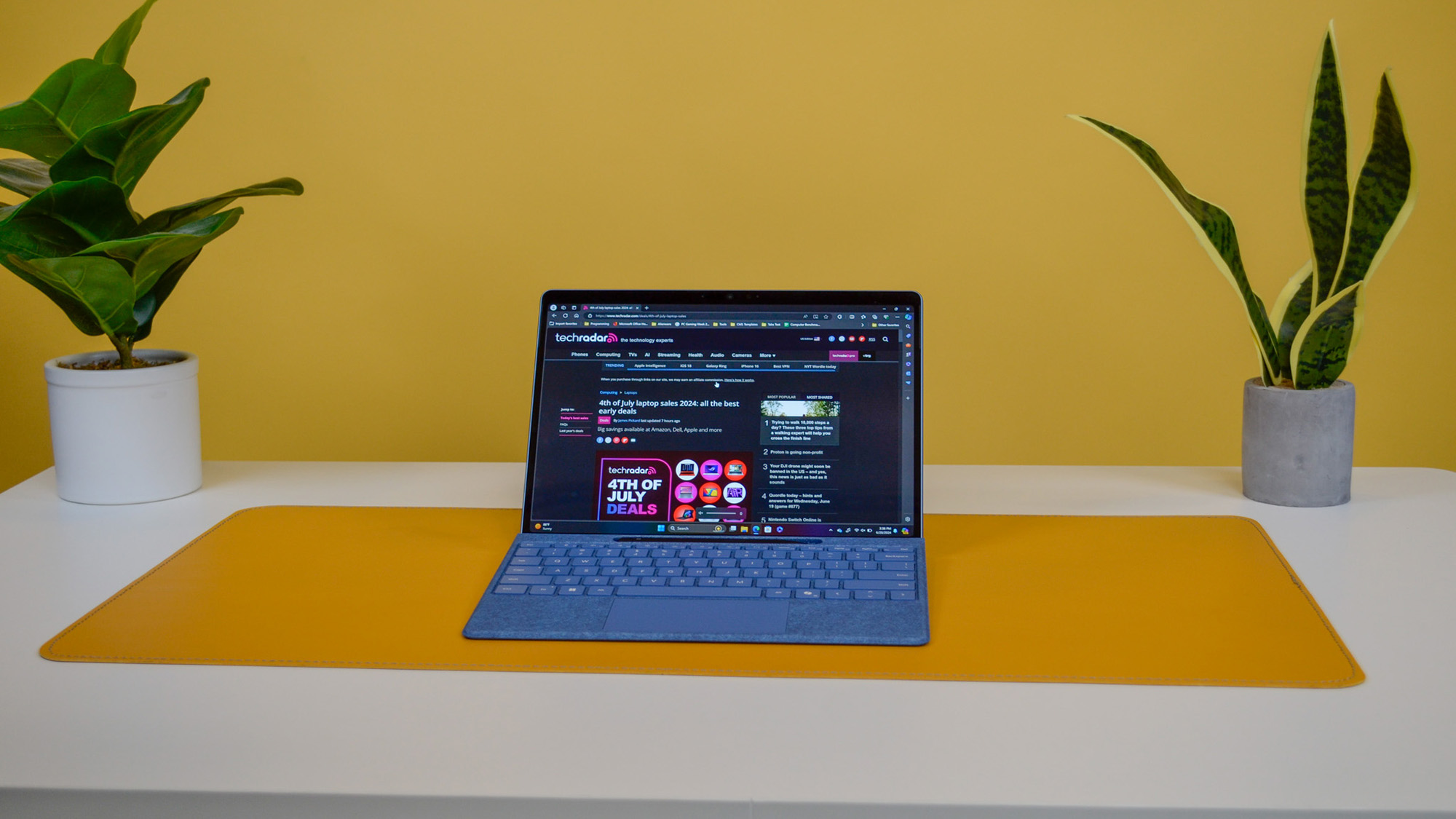
With that out of the way, and with all that still top of mind, the Microsoft Surface Pro 11 is my favorite laptop of the year, and I don't see any on the horizon that will dislodge it. I've reviewed dozens of laptops over my last four-plus years writing for TechRadar, and the Surface Pro 11 is the device I'll want to take with me when I have to travel for work, or when I want to work somewhere outside the home or office.
From its incredible design, gorgeous display, and all-day-plus battery life, the Microsoft Surface Pro 11 is more than a match for the iPad Pro, and thanks to its full Windows 11 OS, it can do more than an iPad Pro could ever dream of doing in terms of features and functionality.
Its performance might lag behind the latest iPad Pro with Apple M4 overall, but it is still very competitive nonetheless. That said, the Surface Pro 11 was able to actually run all of my standard benchmark tests, something a MacBook can't do (an iPad even less so), and there weren't any standout weaknesses when it comes to most users.
And even though the Surface Pro 11's gaming performance is pretty laughable overall, it's not like the MacBook Air is a gaming laptop either (no matter how much Apple wants you to believe it is), and the Surface Pro 11's gaming chops are about the same as the best ultrabooks out there.
Where the Surface Pro 11 really shines, however, is its design and battery life. Easily the best-looking detachable laptop on the market, it also sports up to a 2.8K OLED display with far better color accuracy than an iPad Pro according to our tests, a 1440p webcam along the edge of the display for better framing when in landscape mode, and a lightweight but solid build that feels like the investment it is.
In terms of battery life, I'll get into more detail in a bit, but this device lives up to Microsoft's 14-four battery life claim, even edging closer to 15 hours in my local video playback tests. This is a hell of an accomplishment for an OLED laptop and underscores just how good Arm architecture is for power efficiency.
All in all, then, the Microsoft Surface Pro 11 does exactly what it has to do, does it well, and even pushes past what most users are going to expect from even the best Windows laptop of the past few years. It's not perfect, but as more developers release Arm versions of their apps and more AI apps and features roll out, this is a phenomenal laptop that will only get better over the next year and beyond.
Microsoft Surface Pro 11: Price and availability
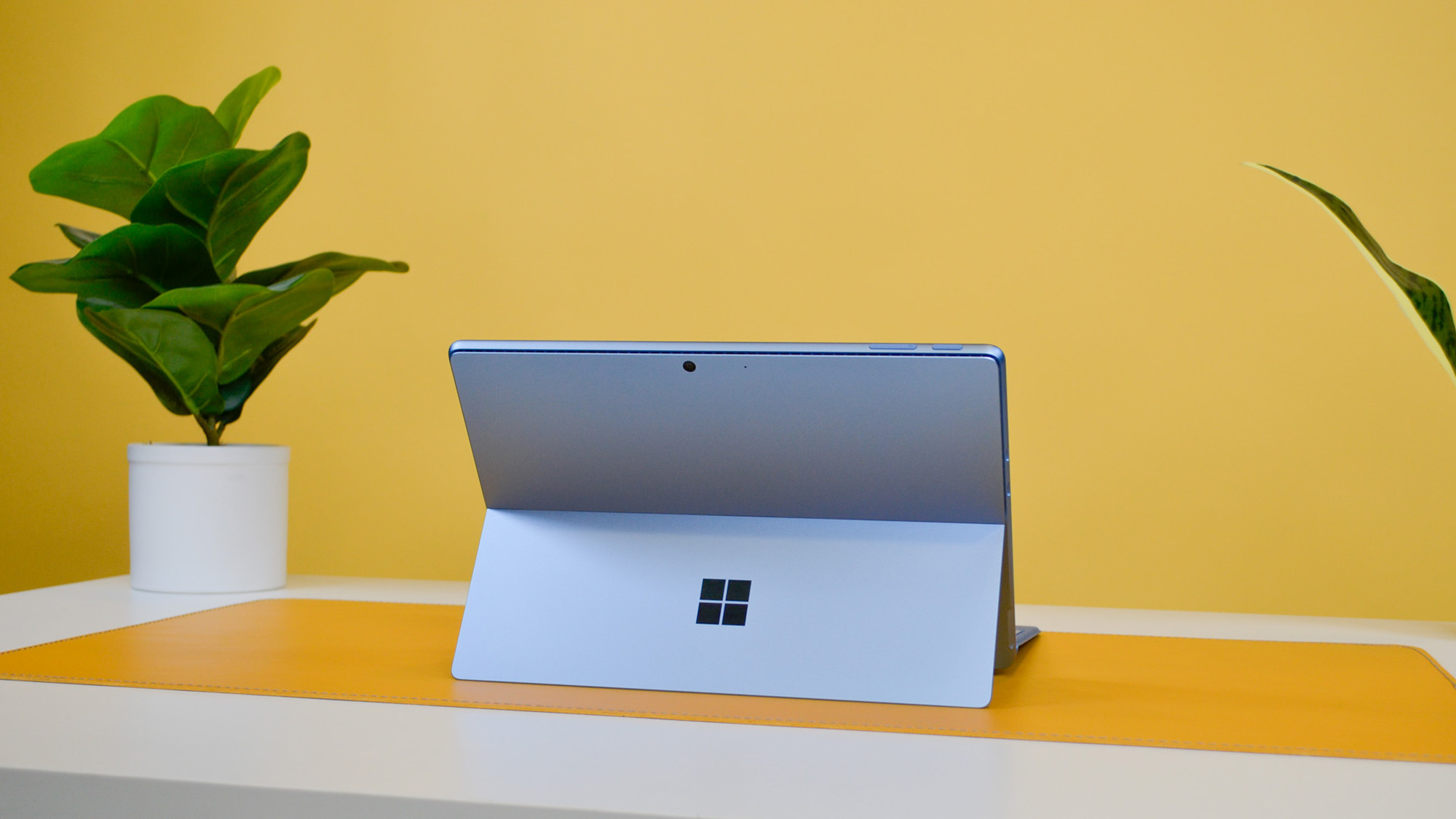
- How much does it cost? Starting at $999.99 /£1,049.99 / AU$1,899.99
- When is it available? The Microsoft Surface Pro 11 is available now
- Where can you get it? You can get it in the US, UK, and Australia
The Microsoft Surface Pro 11 is available now in the US, UK, and Australia, starting at $999.99 /£1,049.99 / AU$1,899.99.
For this price, you get a 10-core Qualcomm Snapdragon X Plus chip, a 2.8K LCD display, 16GB RAM, and 256GB SSD. You can upgrade to an OLED display with a 12-core Snapdragon X Elite chip, 16GB RAM, and 512GB SSD starting at $1,499.99 / £1,549 / AU$2,699. With the LCD model, you only have the option to increase storage capacity, as all configurations come with 16GB RAM.
The top-level configuration, with a Snapdragon X Elite, OLED display, 32GB RAM, and 1TB SSD, will cost you $2,099.99 / £2,149.99 / AU$3,599. As mentioned before, all of this is before spending additional money for one of several compatible keyboards. Only Wi-Fi models are available at this time, but 5G-enabled models are due out later this year.
Compared to the iPad Pro 13-inch, the Surface Pro 11 generally comes in, though the iPad Pro is going to have a better display to start. On the flip side, it starts with much less memory and you do get a fully functional Windows 11 operating system, not a beefed-up mobile OS like you get with the iPad.
- Value: 4 / 5
Microsoft Surface Pro 11: Specs
Microsoft Surface Pro 11: Design
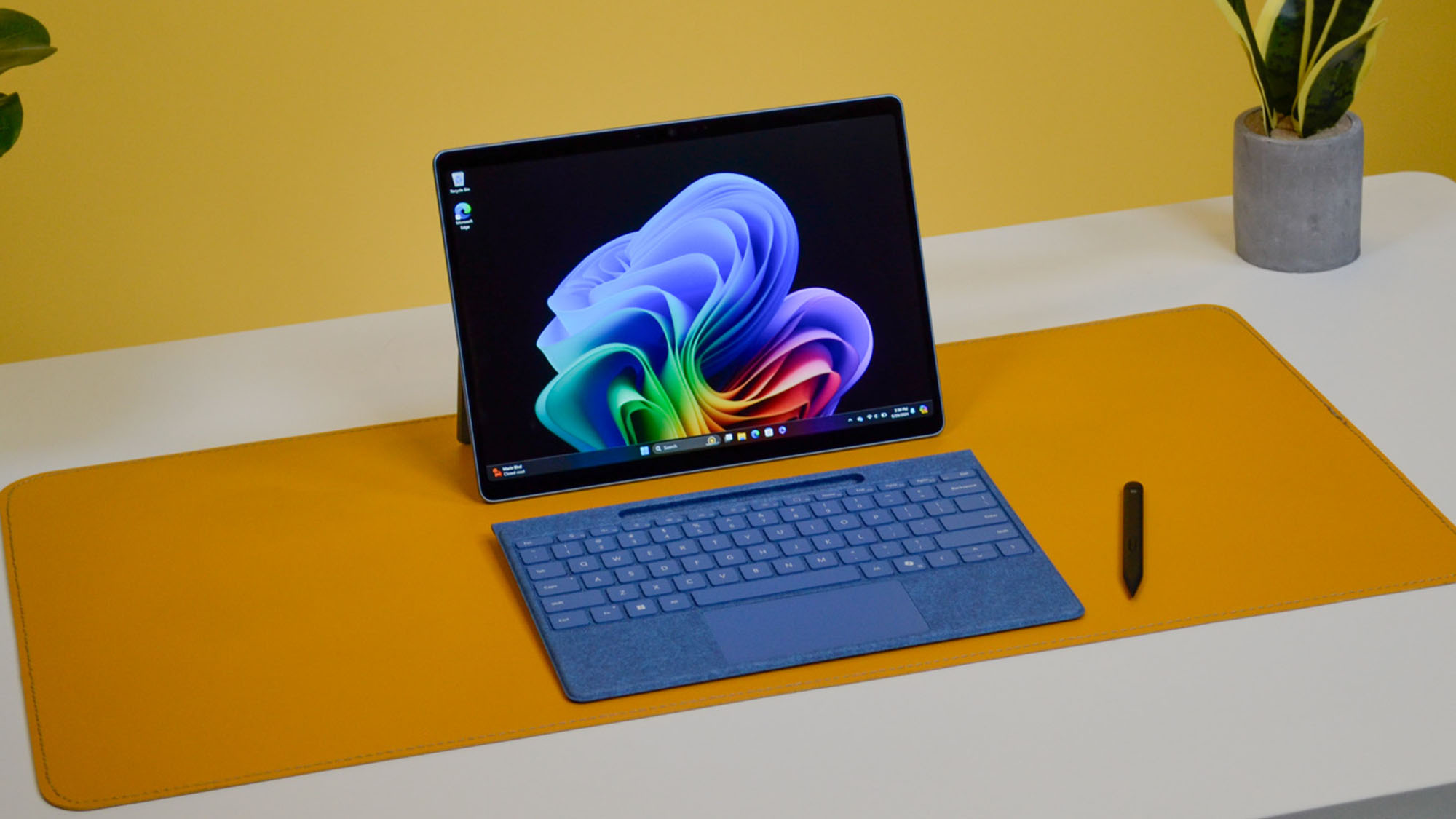
- Gorgeous display
- Surface Pro Flex keyboard is fantastic
- Get it in Sapphire Blue, trust me
The Microsoft Surface Pro 11 is not all that different from the Surface Pro devices that came before it, but this one hits different thanks to the gorgeous Sapphire Blue colorway and lovely OLED panel in my review unit.
Featuring a 2880x1920p resolution, a dynamic refresh rate of 120Hz, and a contrast ratio of 1,000,000:1, the display is as good or better than just about any other you'll find on the market at this price. The Surface Pro 11's display also features far better color gamut coverage in our testing than the iPad Pro released earlier this year, with the Surface Pro 11's OLED panel capturing 162.7% of the sRGB and 115.2% of the DCI-P3 color gamuts, making this a fantastic 2-in-1 for creatives.
The HDR brightness on the Surface Pro 11's OLED panel is also much brighter than the iPad Pro's, with the Surface Pro 11 peaking at 878 nits while the iPad Pro was only able to get to 498 nits brightness. Meanwhile, the SDR brightness of the Surface Pro 11's OLED panel averaged about 564 nits to the iPad Pro's 476 nits.
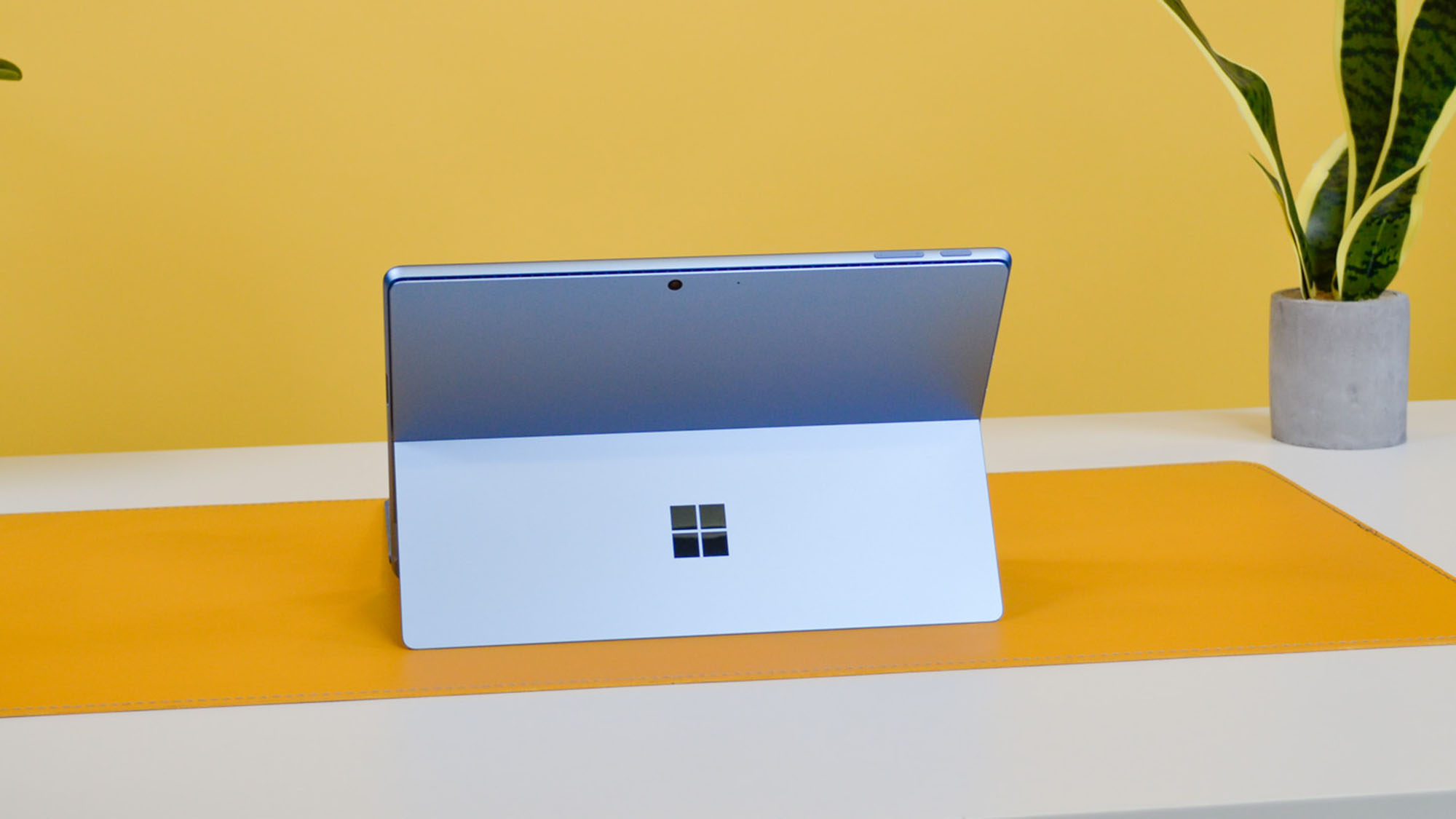
Flipping the Surface Pro 11 over, you'll find the characteristic kickstand that Surface Pro devices are known for, and it opens easily enough but stays firm however you set it. It also has a fairly wide range, with its widest open position letting you pretty comfortably take written notes or do design work on a slightly angled surface.
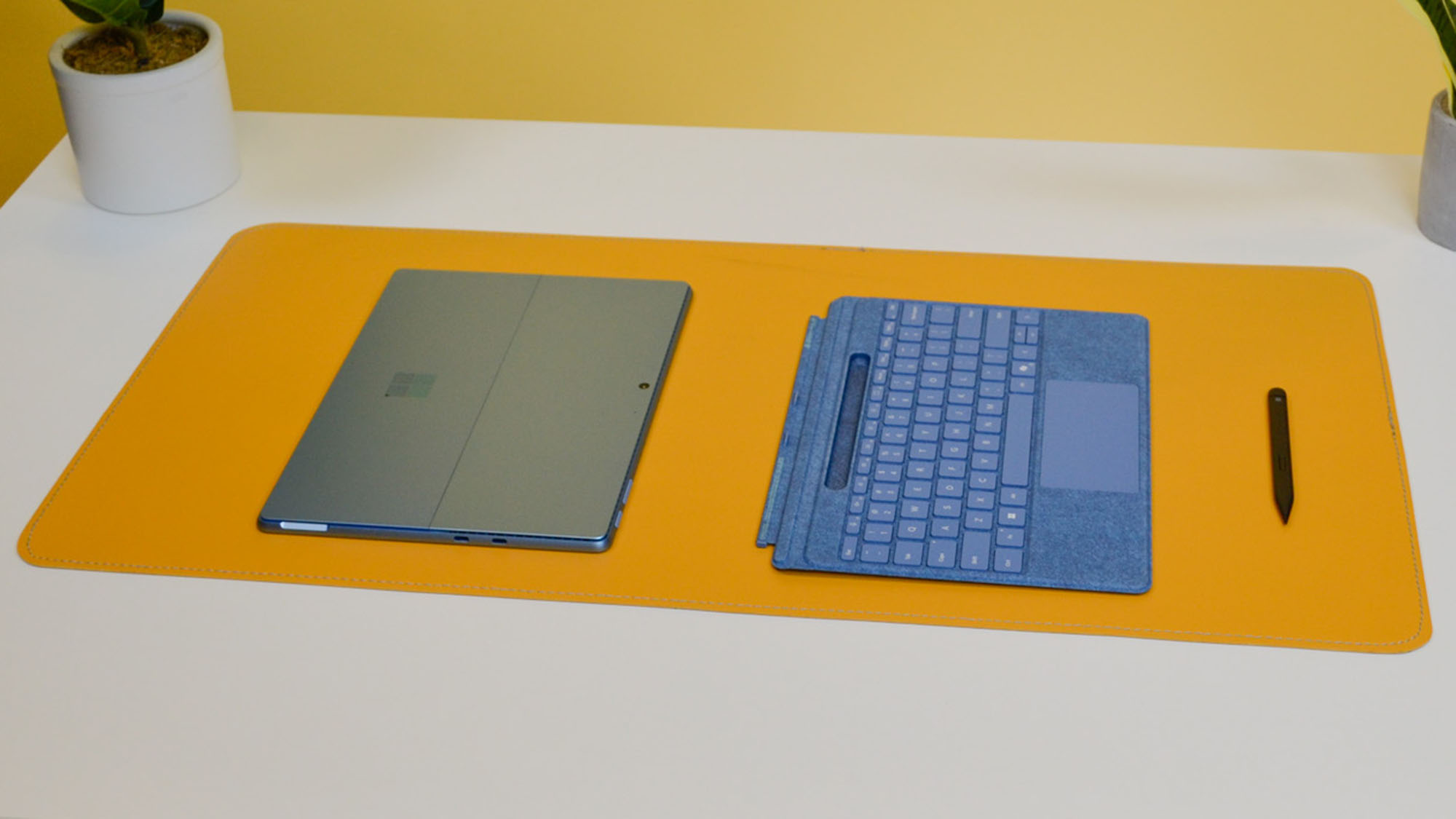
The review unit I received came with a Surface Pro Flex keyboard and Slim Pen, both of which performed very well during my time with the Surface Pro 11. The keyboard is among the most comfortable I've ever typed on, and the Slim Pen, while nothing special as far as a 4,096-point stylus goes (and certainly not up to the level of a professional artist's digital tablet and pen), works pretty well with the Surface for note taking, photo editing, and illustrating work.
The keyboard easily attaches to the pins along the edge of the Surface Pro 11 and they don't detach easily, letting you carry it around without worrying that you're going to drop the keyboard.
The Flex keyboard also lets you detach it and roll the connector flap underneath the top edge of the keyboard, giving you a better typing angle. Also along the top of the keyboard is the magnetized slot for the Slim Pen. If there's a knock I have on the design, it might be that this magnet is too strong, forcing you to sometimes have to really dig in to get the pen. Considering how well Microsoft incorporates accessibility into its products, this was a surprising slip on its part, but it's not deal-breaking by any means.

You only get two Thunderbolt 4 ports, but for a tablet-like device, that's not bad at all. Being Thunderbolt 4, the ports feature charging, data transfer, and DisplayPort 1.4a video output.
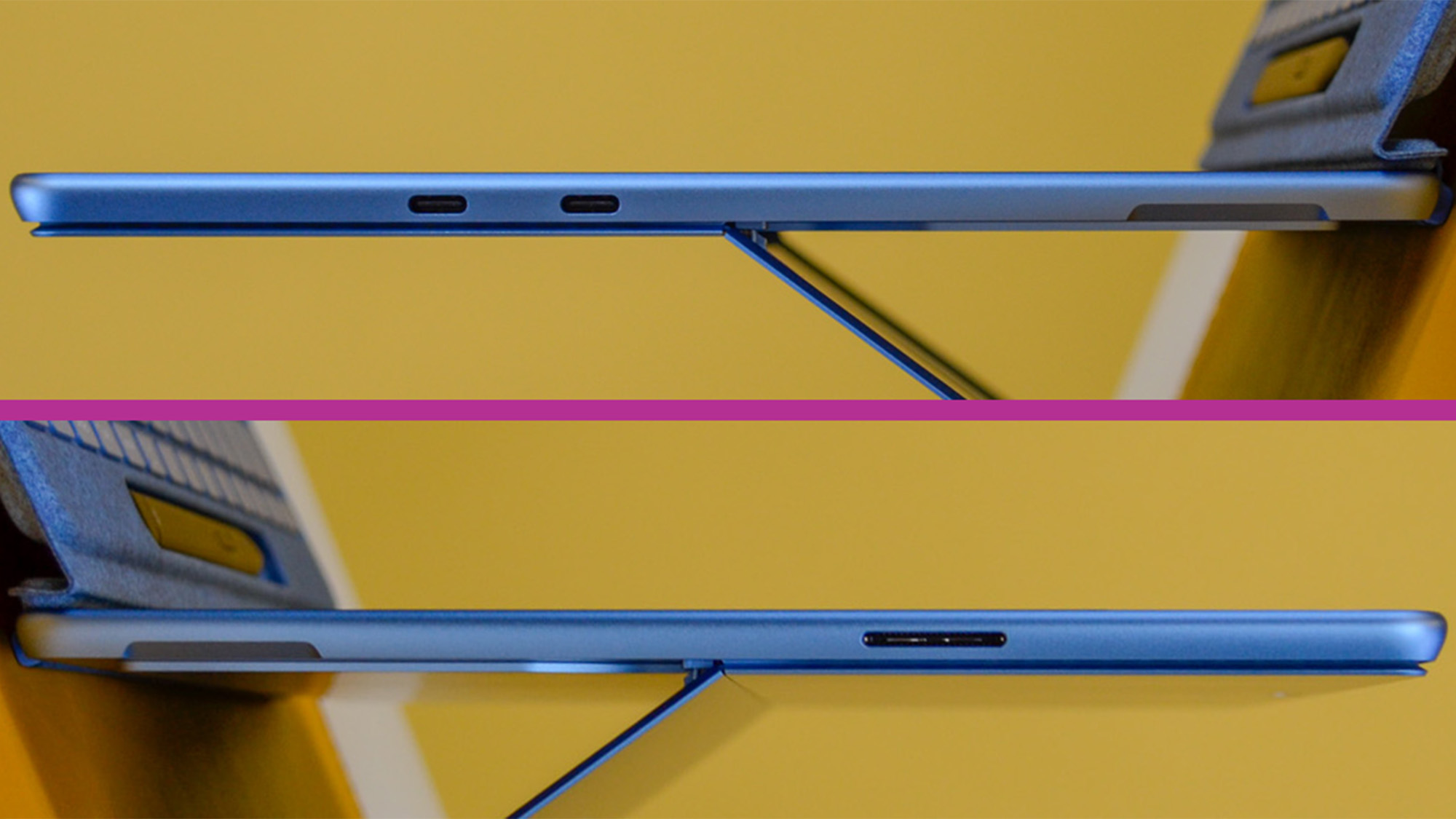
The webcam is positioned along the landscape edge of the Surface Pro 11, rather than at the 'top' of the tablet like with the iPad Pro. This makes video calls much less awkward, and the 1440p webcam sends out a crisp, clear image at 30 fps. The webcam also integrates into Windows Hello for better security on the device.

The speakers are fine for a tablet-like device, but they won't wow you. If you want proper sound, you'll need to look into getting a headset to pair with the Surface Pro 11, as there is no headphone/microphone jack.
I won't speak about the other colorways, because I honestly don't want to. The only color you should consider for the Surface Pro 11 is Sapphire, which is an eye-catching powder/sky blue. It's simply much nicer aesthetically than Dune, Platinum, or Black. If you do, you'll have easily one of the prettiest laptops going, and you might even get some jealous looks from Apple diehards.
- Design: 5 / 5
Microsoft Surface Pro 11: Performance

- Great overall performance
- Prism Emulation is pretty decent
- Lags Intel, AMD, and Apple laptops
Windows-on-Arm has come a long way in the four or so years since Microsoft began rebuilding its x86-defining OS for a whole new architecture.
I won't bore you with the finer details of chip-level instruction sets and all that, but it's important to know a few things before you buy a Microsoft Surface Pro 11.
Once you've built an operating system on the foundation of a certain defined table of machine-language operations that make it all work, switching out that table of operations for a different, albeit similar, set of operations is a lot like immersive language learning.
Think about it like this: if all you've ever known your whole life is English or Spanish, landing in Beijing and trying to learn Chinese from scratch isn't an impossible task, but it is going to be much, much harder than if you'd grown up speaking it.
Microsoft has struggled for years with even some of the basics of speaking Arm, having spent four-plus decades speaking x86, and Windows-on-Arm historically struggled in that intermediate range where the OS would work, but nothing else installed on the OS would (assuming it would even install). Microsoft still isn't fully fluent in Arm, so to speak, so Windows 11 on the Surface Pro 11 still suffers the occasional app incompatibility here or there, but it is lightyears ahead of where it was in 2020, and that's largely thanks to Prism emulation.
Built into Windows 11 on the Surface Pro 11 is a software layer that acts as a translator for apps that can't work on Arm hardware, taking an app's code and converting its x86 instructions into Arm instructions. Apple's Rosetta works the same way, but just like relying on a translator in a foreign country is going to slow down the pace of conversations, translating an x86 app into Arm takes time that does impact the app's performance.
And this is where the Microsoft Surface Pro 11 really surprised me. I was genuinely surprised at how well apps ran, even in emulation. They were nowhere near as fast as native apps, but they were more than fast enough that 95% of users wouldn't even notice a difference.
Still, there are differences, and they show up pretty clearly in benchmarks.
On the plus side, the Snapdragon X Elite's multicore performance in Geekbench 6.3 was toe-to-toe with the Apple M4 in the iPad Pro, so there is a lot of room for Windows-on-Arm to grow, rather than be held back by slower Arm-based chips as it had been in the past.
But in benchmarks like CrossMark Productivity, the Surface Pro 11 lagged behind the iPad Pro considerably, scoring only 1,327 to the iPad Pro's 1,771.
In terms of creative performance, in my PugetBench for Creators Photoshop benchmark tests, the Surface Pro 11 scored 5,600 compared to the Apple MacBook Air 13-inch with M3's 8,583 in the same test. Pretty much across the board, it was the same wherever the Surface Pro 11 has to rely on Prism Emulation to run a benchmark, which puts the Surface Pro 11 at a disadvantage right out the gate.
These differences are very real, and if you need high performance for your work, then there are going to be few cases right now where the Microsoft Surface Pro 11 is going to outperform an Intel, AMD, or Apple silicon-powered laptop. You'll almost certainly be better off with one of those laptops than the new Surface Pro 11.
But performance isn't strictly a numbers game. More often than not, it's more vibes than anything, and most people need good to great performance and responsiveness and the ability to use the apps they want without any or as little fuss as possible. I spend my days testing the best computer hardware for the consumer market on the planet, and for non-gaming, non-intensive creative work, I found the Surface Pro 11's real-world performance to be a match for any of the dozens of ultrabooks I've tested in the past two years.
- Performance: 3.5 / 5
Microsoft Surface Pro 11: AI features
While not an official scoring category here at TechRadar (at least not yet), it's worth breaking out the Surface Pro 11's AI features into its own discussion apart from general performance.
AI PCs are very much in their infancy, with the first consumer laptops with NPUs only shipping in early 2024. Most developers don't even have developer kits with NPUs in them yet, so the number of AI features you're going to find in an AI laptop right now is pretty small.



The Surface Pro 11 does have some nifty features though, which show the potential of NPUs for consumers. If you've used Zoom, Microsoft Teams, or Google Meet, you've probably done a video call where you could blur your background or even swap it out for something kitschy or fun.
Studio Effects does something similar on-device, even allowing you to bring these changes into online calls so your video data isn't being processed in the cloud (at least not the blurring stuff. The video encode/decode is still being processed online). The list of available features in Studio Effects will likely expand as it moves from its current 'preview' state to a more mature production feature, so this is probably just a glimpse at what will be possible with Studio Effects over the next year or two.

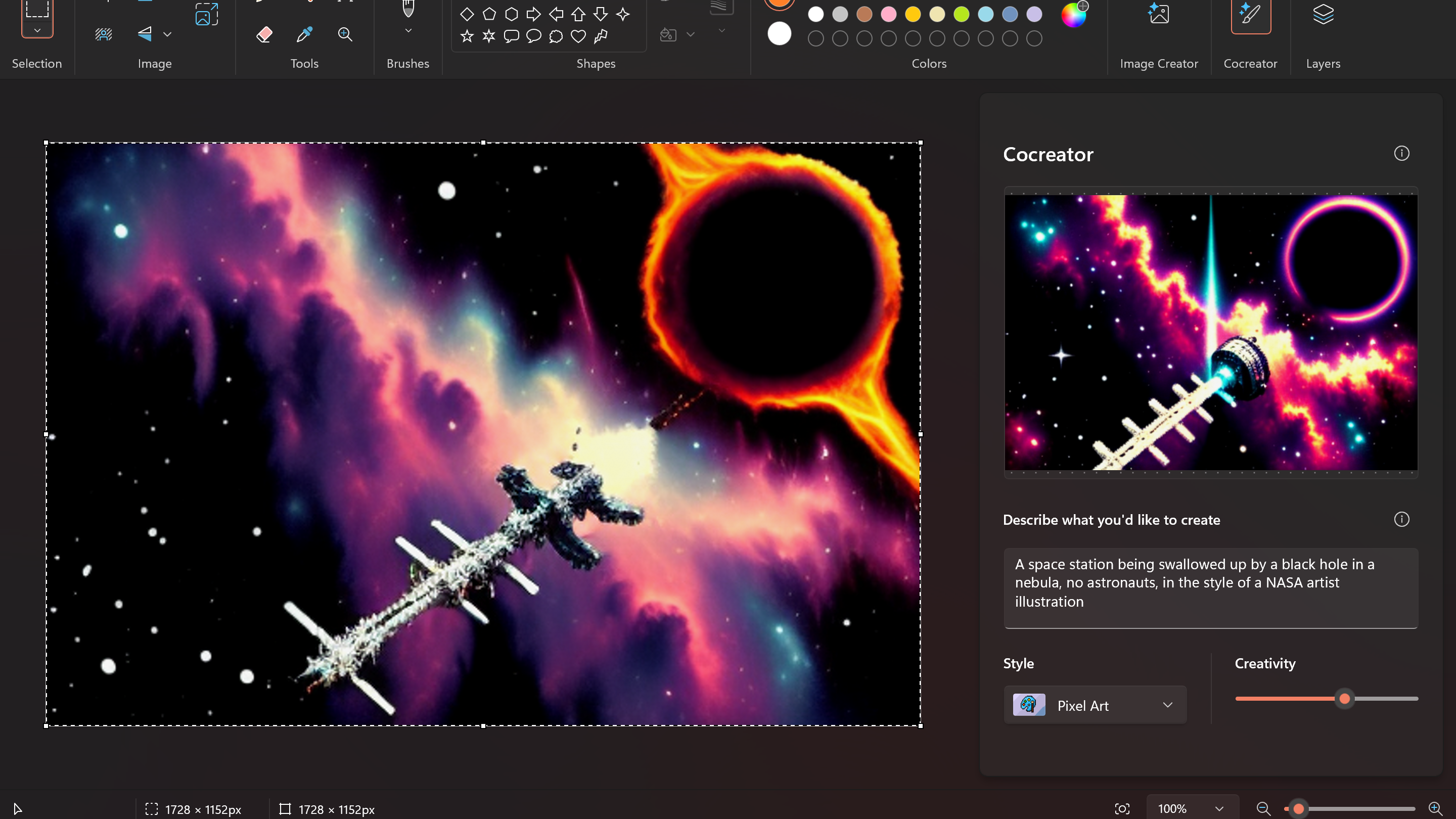
Another interesting feature is Cocreator, which lets you sketch an idea out in Microsoft Paint and Cocreator will generate a more detailed/refined image based on a text prompt and some other parameters. You can even click on the generated image and move it to the canvas, where you can refine your idea further.
Of the three AI 'launch' features for the Surface Pro 11 (the other being Recall, which isn't available as of yet), Cocreator is the most interesting. The images aren't necessarily great, and don't get me started on generative AI, copyright, and its theft from countless artists both alive and dead, but Cocreator is something I can actually see people using, if only for themselves.
The quality of the images being produced isn't nearly good enough to pass as actual art (the 45 TOPS NPU doesn't have nearly the processing power to do proper generative AI as we see from Midjourney and other gen AI tools that work in the cloud), and they're even too rudimentary for clip art or slideshow backgrounds.
Still, as an inspirational tool for the actual creative process (not just visual, but for writers and others as well), this could be something people might find helpful. It's not the kind of feature that's worth upgrading your laptop over just to get it, but it does point to where the future of the AI PC is likely to go in the next 2-3 years.
For now, that's really the only AI the Surface Pro 11 is offering as discrete features, but it's early yet. With the release of Microsoft Copilot+ Runtime, developers have a whole host of new tools to leverage the NPU to carry out AI workloads, so it's only a matter of time before AI apps hit the scene in force, and when they do, the Surface Pro 11 will be ready to run them.
Microsoft Surface Pro 11: Battery life
- Nearly 15 hours of local video playback
- Takes about an hour to charge to full
The keystone feature of the new Microsoft Surface Pro 11 isn't its performance, AI tools, or even its appealing design. What really sets the Surface Pro 11 apart from many Windows laptops is its battery life, which is robust enough to challenge even the best MacBooks for longevity.
In our web surfing test, the Surface Pro 11 managed a very impressive 12 hours and 10 minutes of battery life. Even more impressive was our local video playback test. With the display set to full brightness, energy saving turned off, and volume at 50%, the Surface Pro 11 squeezed out 14 hours and 33 minutes of battery life.
Considering that this is an OLED laptop, getting more than half a day's worth of use is something we really haven't seen. The iPad Pro with M4, for instance, got 14 hours and 50 minutes of battery life in our testing, and the MacBook Air 13-inch with M3 managed 15 hours and 13 minutes in our web surfing test. With some settings tweaks, there's no question that the Surface Pro 11 can go well beyond the 12-15 hours it got in our tests and stretch well into the 18-20 hour range, if not even longer.
The 47WHr battery charges fairly quickly with the included charger, but fast charging is available with a 65W or higher power cable, either through the Surface charging port or through USB.
- Battery Life: 5 / 5
Should you buy the Microsoft Surface Pro 11?

Buy the Microsoft Surface Pro 11 if...
Don't buy it if...
Also consider

Apple MacBook Air 13-inch (M3)
The thin and light laptop that started a revolution in computing is still going strong, and the Apple M3 chip is about as powerful as any you'll find in this form factor.
Read the full Apple MacBook Air 13-inch (M3) review
How I tested the Microsoft Surface Pro 11
- I spent about a week with the Surface Pro 11
- I used it for everyday productivity and content creation work
- I ran our standard suite of Windows laptop benchmarks
I spent about a week with the Microsoft Surface Pro 11, using it mostly for everyday work, futzing about online, streaming movies, and the like.
I also ran TechRadar's standard suite of Windows laptop benchmarks on the device after installing the tools as normal and with no special flags or settings used besides the tool defaults.
I've been reviewing laptops and computer hardware for TechRadar for more than four years, and have personally reviewed many dozens of laptops in just two years alone. I know what to expect from a laptop in this class and how a laptop's performance ought to match up to its price based on its competition.
We pride ourselves on our independence and our rigorous review-testing process, offering up long-term attention to the products we review and making sure our reviews are updated and maintained - regardless of when a device was released, if you can still buy it, it's on our radar.
- First reviewed June 2024






